Well, it’s a very common question; and there isn’t a definite answer. All children are different; but in general, babies usually start to creep at about the age of 6 months around the time their first birthday comes around. The way that they move will depend on which country you live in. In America and Australia, crawling is more popular than creeping because their hands are free, unlike the other countries who prefer to use their knees.
Some parents worry if their child hasn’t started crawling yet, but don’t be! It doesn’t necessarily mean anything bad, your child could have started creeping or is just a late crawler. That’s fine- they’ll have more time exploring the world around them with their newfound mobility at their fingertips!
In This Article
At What Age do Babies Start Crawling?
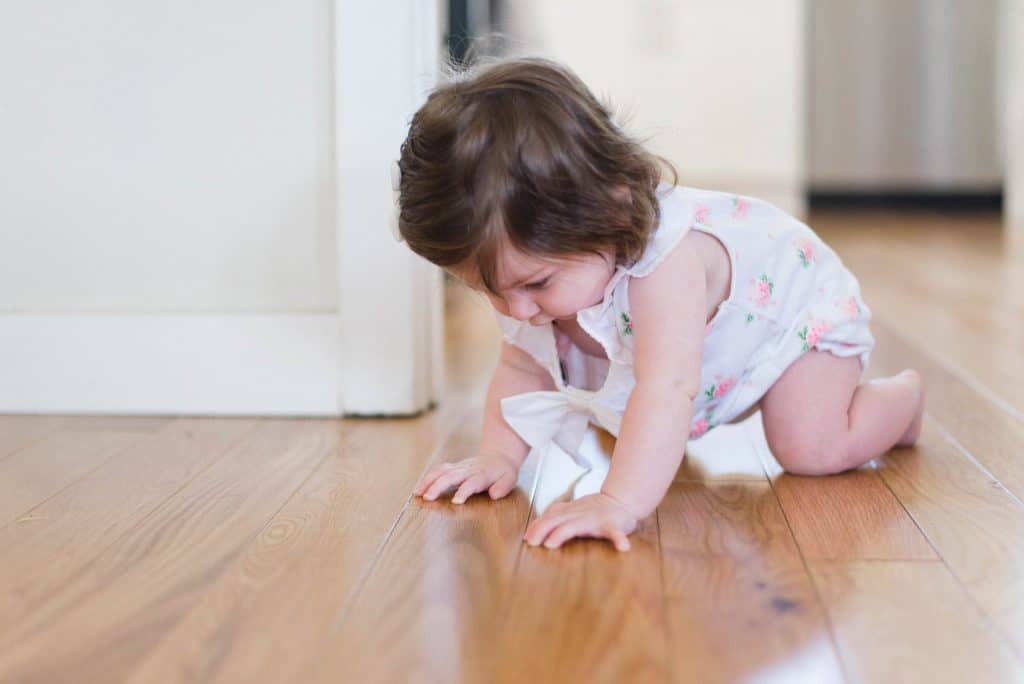
Now, you’ll want to know when do babies start crawling. This varies from child to child.
Some children begin creeping at about the age of 6 months. There are some late crawlers though, and they usually start between 7-9 months old.
Others might not start until they are 8 months old, or even older (2 years). This doesn’t mean there is anything wrong.
Some children tend to walk sooner than others. Just because they started walking earlier, it doesn’t necessarily mean that they will start crawling/creeping at a younger age. Watch your child’s skills, and don’t worry too much if they haven’t started to crawl yet.
There has been a lot of research done on this topic, and scientists have found that the age a child begins to walk is mostly based on their genes, not any environmental factors. Even if your family doesn’t have a history of early walking, there are always exceptions!
What are signs Baby is Getting Ready to Crawl?
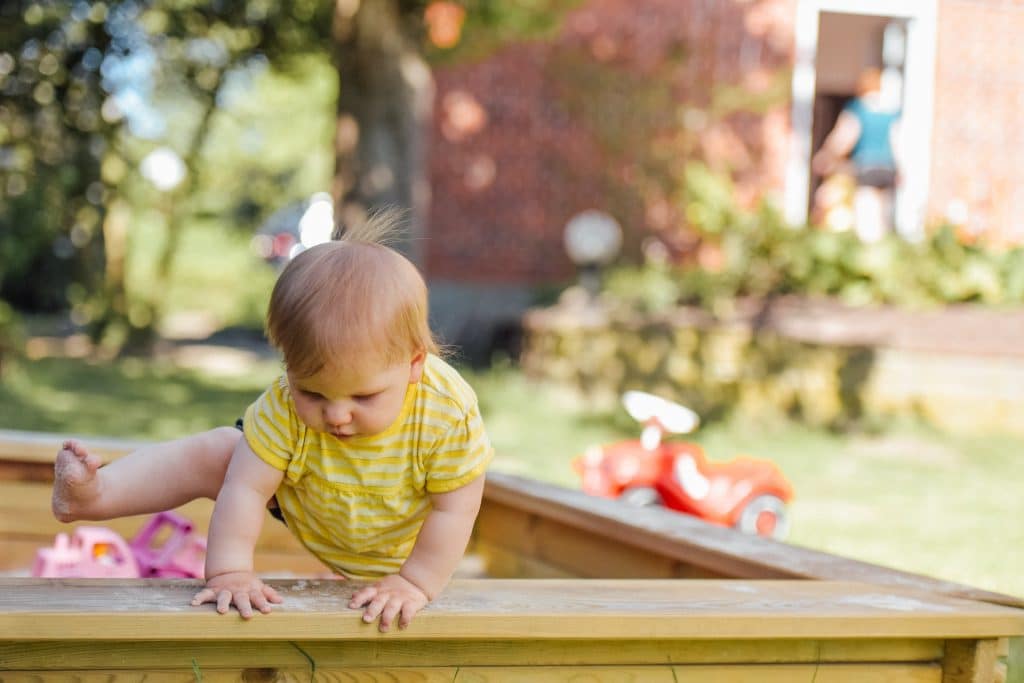
There are many signs that your baby is getting ready to crawl. If you see any of these, rest assured, the crawling process will soon be underway:
- Your baby should show interest in the world around them – this can mean smiling and reaching for objects.
- They will start to play in specific ways that indicate they’re moving towards crawling as opposed to crawling. This includes using one arm and leg at a time when they are upon their hands and knees; rather than both arms or legs together.
- Your baby may start to attempt moving around the way that they play with toys that is, dragging themselves along the floor while playing with an object in their hand.
- They may also be attempting to move away from you, without waiting for you to pick them up or carry them.
The best way to know when your baby will start crawling is just by watching them! Pay attention to what they are interested in and the ways that they like to move around.
What Moves Will Baby Start Attempting?
What moves will babies begin attempting? If you are wondering when do babies start crawling, they’ll be making some new movements that look like this:
- Your baby will attempt to crawl by dragging themselves with one hand and pushing off with the other. This is called the “bear crawl”.
- They’ll try to use their knees as well as their hands when they are on the ground.
- They may start using their knees to push off from when they’re up on their hands and knees too.
- They’ll use a scooting motion to move around, where one hand and knee move at a time.
- Baby will also practice pulling themselves forward with alternate feet.
- Your baby can now bring themselves into a sitting position from a laying back.
- They may also try to “walk” by dragging their legs on the ground while holding onto furniture or your hand with both of theirs.
As you can see, there are many ways that babies learn to crawl: they will move in different ways at different times and grow towards walking in their unique ways.
What are the first stages of babies crawling?
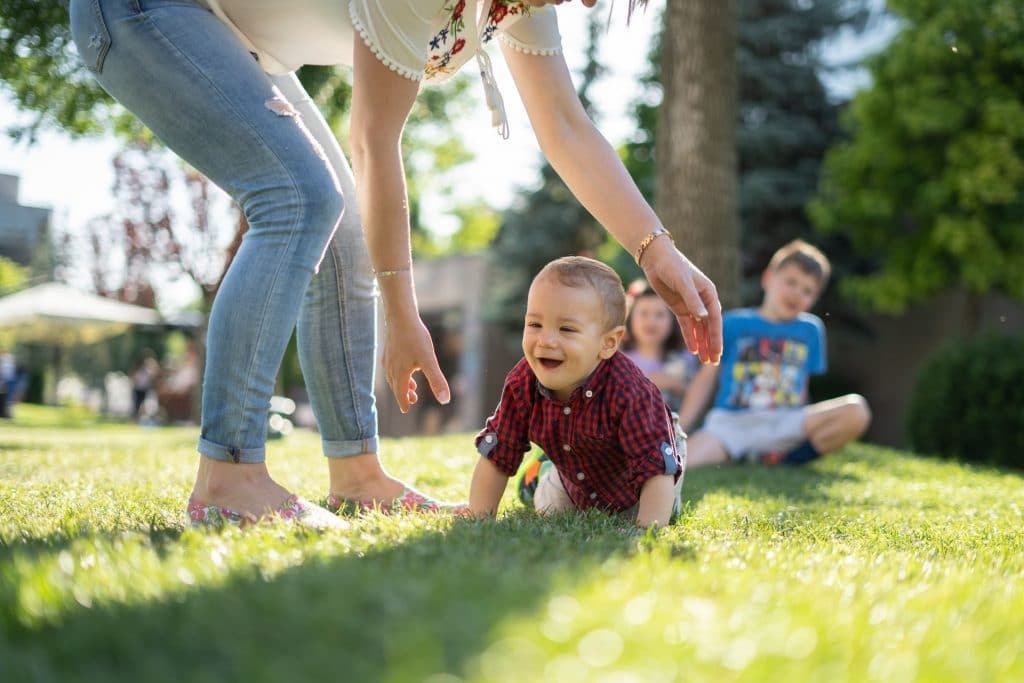
When do babies start crawling? There are a few stages of babies crawling that you’ll want to be aware of so that your baby’s progress is easier to follow.
– Your baby will learn to bring themselves into a sitting position from laying back. It’s also about this time when your baby will begin to practice lifting their head, and holding it up against gravity.
– They may attempt to bend forward and touch something that is in front of them. They can’t quite do this yet, though instead, they’ll just be bending at the hips.
– Your baby will start to practice pulling themselves forward with alternate feet, and may even try “walking” by dragging their legs on the ground while holding onto furniture or your hand with both of theirs.
– Baby will also be practicing pushing themselves upon their hands and knees, so they can turn to face objects that interest them.
– Your baby will sometimes attempt to move away from you when you let go of them they’ll quickly learn that this works!
What Are the Different Types of Babies Crawl?
There are many different crawling styles of when do babies crawl, but a few that you’ll especially want to be aware of include:
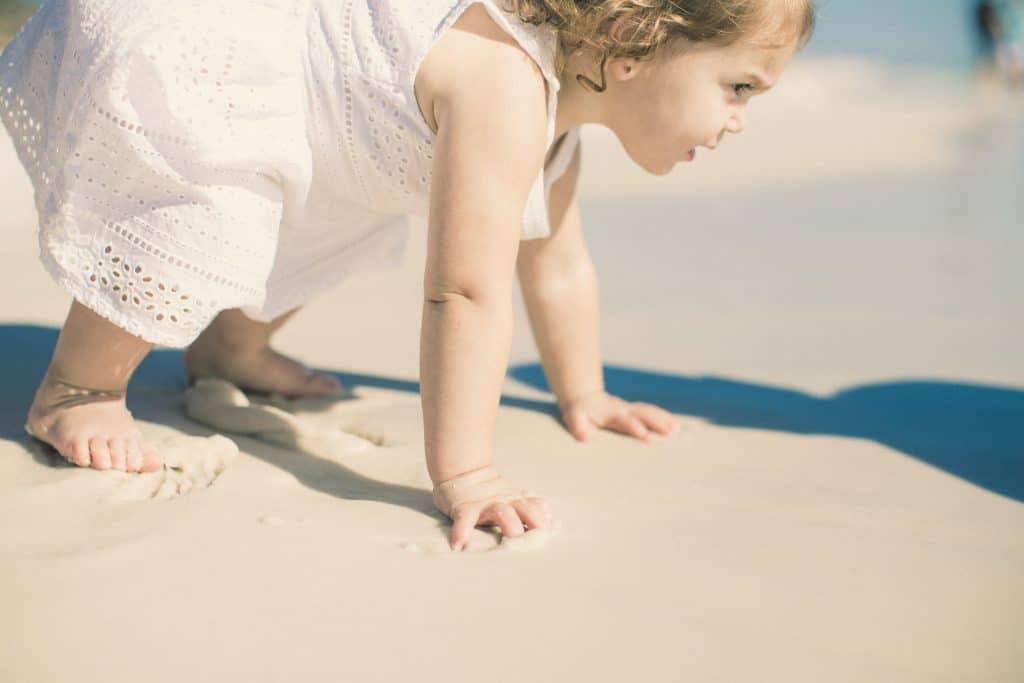
Classic crawl: Once your baby is practicing the bear crawling and other movements in their floor time, you’ll know that they’re ready to begin the classic crawling. It’s when your baby gets on all fours like a cat, and moves forward using alternate hands and feet.
Reverse crawl: This is when your baby practices moving themselves backward before they are moving forward, or in any other way! It’s not common for babies to do a reverse crawl by themselves, so it’s normal if your baby never does this. But you’ll know that it happened when they start using their hands and feet at the same time to move backward.
Scoot forward: Many babies start with a bear crawling, but when they notice that they’re getting closer to the objects that they’re interested in on the other side of the room, they’ll start a new move.
Belly crawl: Once your baby has learned to scoot forward, they’ll be ready to try crawling while lying on their stomach. This is called a “tummy crawl”.
It will look different from when they are moving on all fours, in that your baby will use one arm and one leg at a time. This is the least common version of “when do babies crawl”.
Crab crawl: Your baby isn’t one to follow along with the crowd, and that is just fine! If your baby starts to use their hands and feet moving in a coordinated alternating way while they’re on their belly, they are most likely practicing a crab crawl.
Cradle crawl: This is when your baby holds their arms up in front of them, close to the ground as they move on their stomachs or even laterally (sideways). They use these “cradled” arms to keep their balance as they move.
Straddle crawl: Your baby will begin this move with a classic crawl, that is on all fours. Later your baby will start coming up on their knees and once they are tall enough for it, crossing one knee over the other. They use these “straddled” legs to help them move and balance.
Rolling crawl: Your baby will be ready to start this move when they can do a classic crawl, but also bring themselves into a sitting position and back down again. To do this, your baby has to learn how to use their arms for balance as they cross one leg over the other while in a sitting position.
This is another move that isn’t common. Some babies do this when learning how to crawl, but most don’t.
How do babies learn to crawl?
Babies will practice their bear crawls and other moves in floor time for you. It’s important to remember that when your baby is just starting it might not seem like they are getting anywhere, but that’s ok! They need time to figure out how to coordinate all of the parts of moving on all fours
As long as they’re trying, give them encouragement and praise to let them know that you’ve noticed! When babies are building up their confidence in moving around on all fours, they will then start practicing crawling.
Babies will learn to move forward into belly crawls by lifting their heads high in the air while they are moving slowly at first. This is a good practice for when they get more confident and can cover more ground faster!
What’s the Difference Between a Crawl and a Roll?
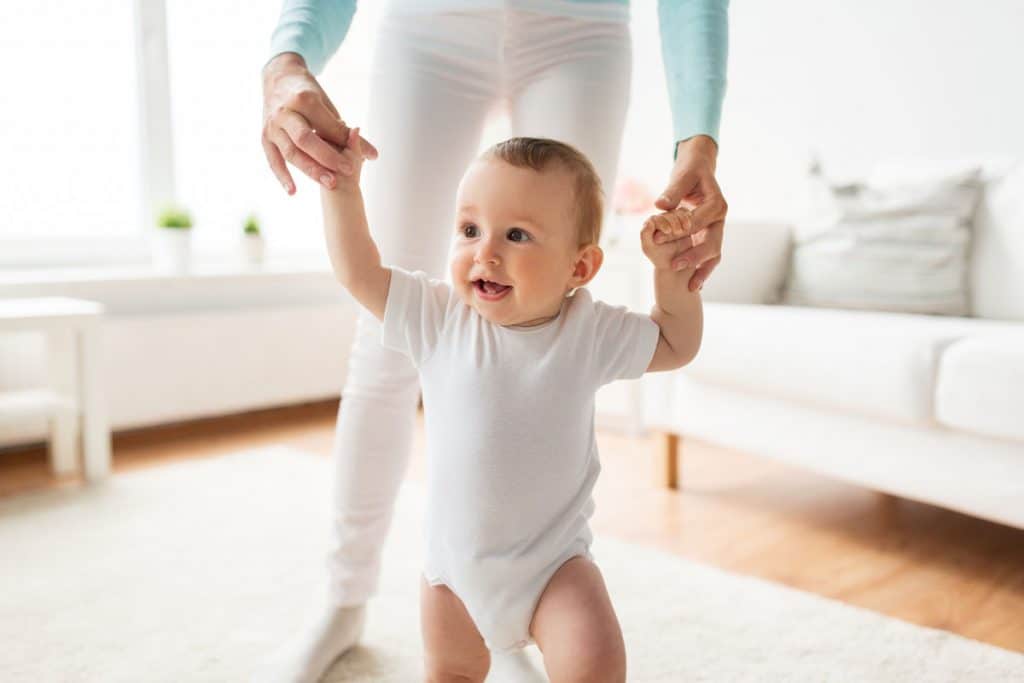
What is the difference between a crawl and a roll? This is an important question when you’re trying to understand when do babies crawl! In most cases, babies can start moving themselves around by rolling on their side before they learn how to practice any other version of crawling.
This makes sense when you think about how early we started practicing rolling over when we were babies: pretty much as soon as we could move!
But it’s not a straightforward answer because some babies roll and then try to master other types of crawling before they learn how to roll. It just depends on the baby. Yours might roll first, or you might find yourself asking”when do babies roll?”.
Crawl or Roll?
So when do babies crawl first? Research shows that for most, crawling begins between 8 and 10 months. But while we know that the majority of children can practice this skill by then, some take a little longer before they master moving themselves around this way. So there is no “normal” or specific age that when do babies crawl occurs.
If your baby had plenty of practice time on their tummy, you may find that they did learn how to crawl first and mastered rolling later. If this was not the case, then you might want to think about how often your baby has been able to spend time on their tummy. Perhaps they just haven’t had the chance to practice rolling yet.
Watch them closely and you may be able to tell when they are ready for it! If your baby hasn’t been on their stomach in a while, or if they show less interest in practicing this move lately, don’t worry about the next steps as there is plenty of time for them to roll their way into tummy time.
When Do Babies Roll?
Your baby may learn how to do a belly crawl when they’re very young, and it may seem like all of the next steps will come naturally in order. But before you know it, your baby has learned how to move themselves around on their backhand side, and may even be able to go from their back to their tummy.
While the baby is on their stomach, the arm that your baby has placed higher than the other will be more curled up (but not bent at the elbow-your baby should have their palm facing out), while the lower arm is outstretched, the hand turned towards the face. This is because of something called the “fencing position” and it’s also important when you’re trying to understand when do babies roll!
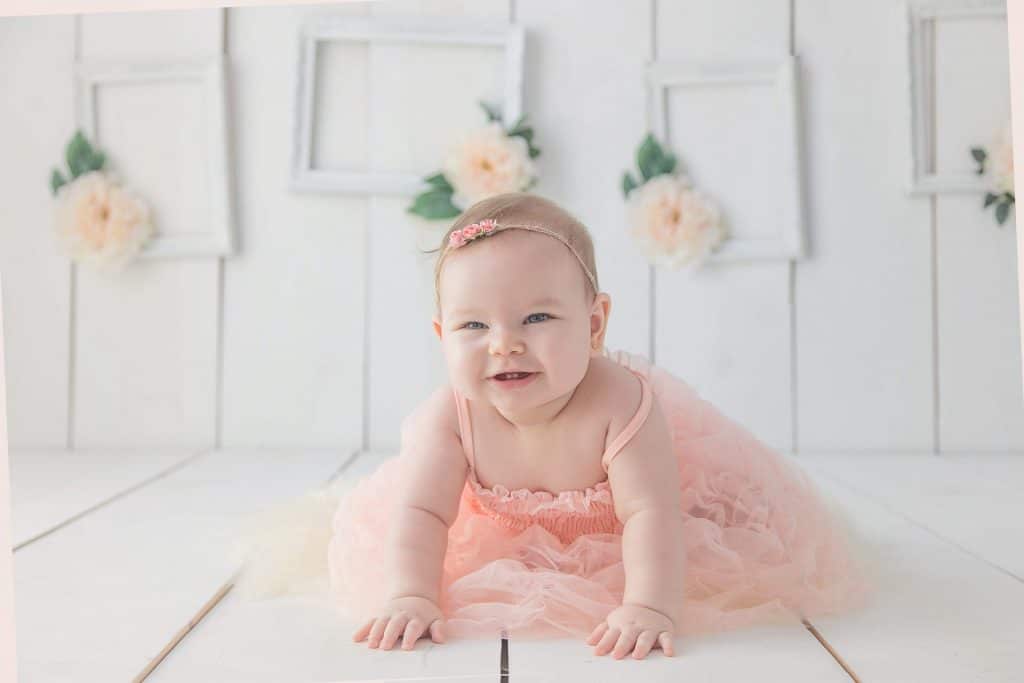
How do you know if the baby will skip crawling?
Some babies skip crawling stage altogether and go right into walking. It all depends on the baby’s individual development, but when do babies start walking are usually around 12-14 months old. If you have noticed that your baby can get into a standing position and take steps, but they aren’t walking yet, make sure to schedule some time for them on the floor practicing their bear crawls so they’ll be ready when it’s time.
How do Babies Learn to Walk?
Babies will learn how to walk much the same way they learned how to crawl. Inactive babies who don’t spend time on their tummy when they are young might have a harder time learning how to walk because when do babies start walking are usually around 12-14 months old.
Do all babies crawl on hands and knees?
Babies will practice both hands and knees crawling early on while they are learning how to move around, but as soon as babies can stand up and walk with a stable stance, they will switch into walking.
So when do babies start walking? Walking is usually learned somewhere between 9-16 months old, but that’s just an average! Some babies may learn to walk earlier and others may be as late as 18 months old.
What is the average age for a baby to crawl?
Babies will usually begin crawling somewhere between 8-14 months old, but that’s just an average! Some babies may learn to crawl even earlier and others may take a bit longer. The average age for a baby to start crawling: Most babies will walk on their own around 9-16 months old, but there is a wide range of development from one baby to another!
What does it mean when a baby bear crawls?
When babies begin learning to crawl they will spend time in a bear crawling position. This is when babies put down their tummies and then move their arms, legs, and hips at the same time. These crawling movements help your child develop the coordination needed for walking!
How many types of baby crawling styles?
There are many different types of baby crawling styles and each one is normal for babies learning how to move around.
Types of Baby Crawls
- Cross crawl
- Rolling crawl
- Commando crawl
- Leapfrog Crawl
- Bottom scoot

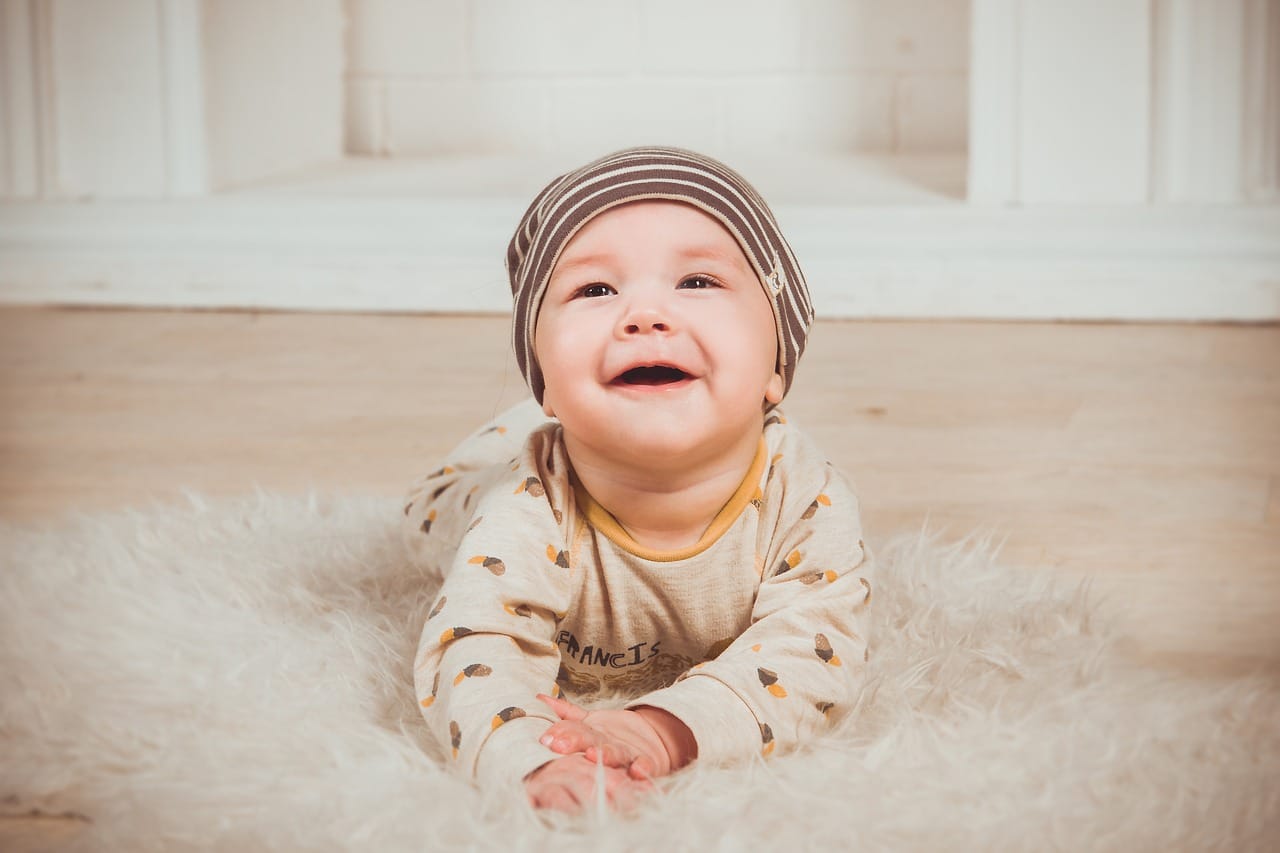
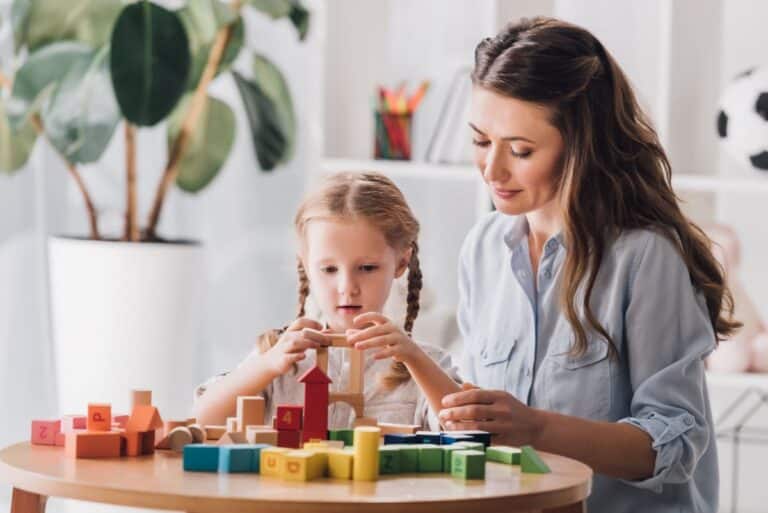
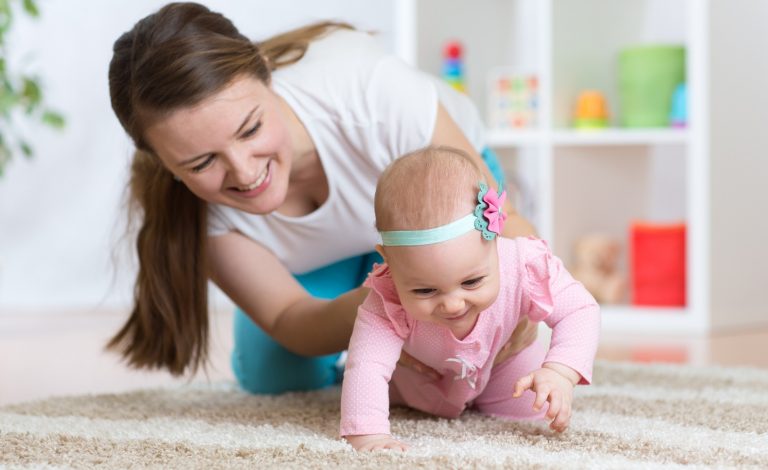
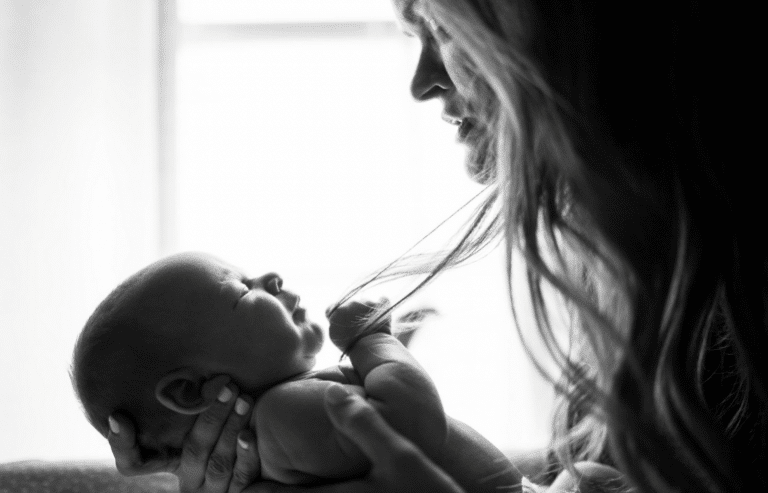
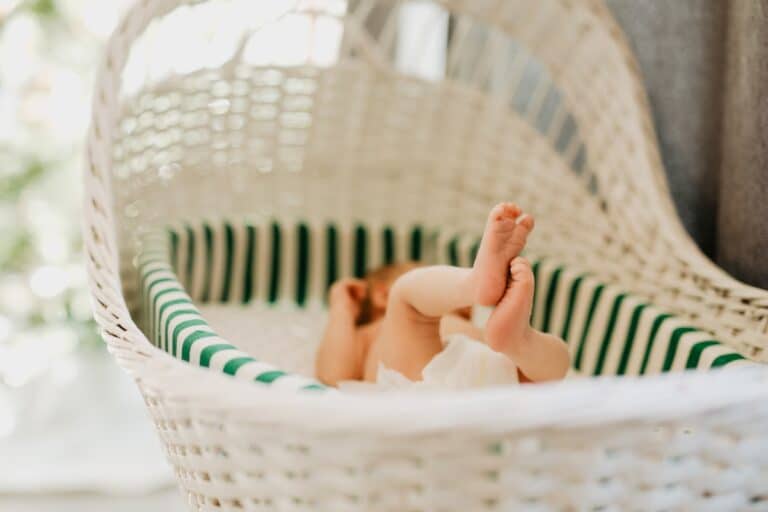




![Home Renovation Guide [2025]](/app/uploads/2021/04/design-hacks-1-378x300.jpg)
